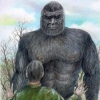I thought i'd get something going with regards to our wonderful Database (SSR) we're building and have been doing now for the best part of five years now.
I wanted to share with you and give you an insight in to how i view the numbers, which is formed by my day job as a Sports Performance Analyst dealing with numbers and translating them in to plain English each and every day.
Anyway, if anybody has any specific they want me to look in to and share, either geographical or regarding creature behaviour/description, just shout and i'll do my best to answer soon enough.
Here's some tidbits anyway and i will add numbers that are relevant by month/season etc as we go along.
Hope you enjoy, here's some random numbers that i thought were interesting.
====
The State of Illinois makes up 16% of all Actual Visual Sightings in the Database from the Fall over the last five years across the entire North American Continent (62).
Of those Reports from IL, only one is from a part of the night when the Moon is visible. Where the last 10 years are concerned, the percentage of Reports from IL jumps to from 16% to 19% (a 19% increase) of all Actual Visual Sightings in the Database from the Fall over the last five years across the entire North American Continent (129) with an even number of Reports from parts of the nights when the moon is and isn't visible.
====
Not one Actual Visual Sighting Report from WA State in the last 10 years in the Fall has been from the time of a night when the Moon has been visible. In the 10 years prior to that, every single night report in Fall that was an Actual Visual Sighting was on a night when the moon was visible.
====
52% of all #Missouri Non Visual Vocalization Reports are from Fall. Of those Reports, 91% come from hours of darkness.
====
For all you WA State year round field researchers, it should be noted that from the near 600 total reports we have for the State, 83% of all Knock Reports in the Fall at night have come at times of night when the moon is not visible. This compares to 44% in the Winter, 71% in the Spring and 51% in the Summer.
====
32% of all Actual Visual Sighting Reports from across the North American Continent in November and December (241) have been from witnesses when driving.
For WA State, that numbers rises to 46%
For IL, that number drops to 21%.
For MI that number rises to 38%.
====
November in Washington State. Of the eight Moon Phases, the Full Moon gives a 200% higher chance of a report than any other Moon Phase in the month of November where night time reports are concerned, based on the 44 reports we have in the database. The Full Moon Phase for this coming November is the 14th.
====
The Olympic Peninsula in WA. 70% of all Actual Visual Reports in the last 10 years are from Fall and Winter.
====
From the 42 Reports we have from Missouri in the last 10 years, 43% (18) have been in the Fall, with 92% coming in the hours of darkness and 83% of those night reports coming at times of the night when the Moon isn't visible.
====
In the last 5 years in WA State's South Cascades Geographical Zone, Pierce County has given us a total of 76% of all Fall Reports. The prior 5 years to that, Pierce County made up just 13% of all Fall Reports from the same Geographical Zone. That's a 485% (four hundred and eighty five) increase in Reports in the last 5 years.
====
We are currently averaging 4 Reports each Fall from Illinois in the last 10 years (39 in Total), and it should be noted that 67% of Fall reports from the last 3 years have come on nights with a Full Moon. Next Full Moon is November 14th.
====
In the month of October over the last 10 years in the State of WA, 93% of all hours of darkness Reports have come at times of the night when the Moon has not been visible. Interesting to note that even though that % is so high, no reports are from nights of the New Moon, the phase when the Moon would generally not be visible at all in hours of darkness.
====
WA State's stunning North Cascade Geographical Zone makes up a total of 19% of all of the State's 232 Actual Visual Reports throughout the Year. That number jumps to 25% for Fall Reports (a 32% increase), and 32% for Fall Reports in the last 10 years (a 68% increase).
====
Ohio :
141 Actual Visual Reports :
18 Reports of White/Grey/Yellow Animals (13%) 21 Reports of Black Animals (15%)
35 Reports of Brown Animals (25%)
14 Reports of Dark Brown Animals (10%)
19 Reports of Dark Animals (13%)
3 Reports of Cinnamon Animals (2%)
21% of all reports with no colour determined.
====
Focus on Illinois Actual Visual Sightings.
Fall makes up 42% of all reports.
October alone makes up 21% of all reports.
When the Moon is visible, the consecutive Moon Phases of the First Quarter, Waxing Gibbous, Full Moon and Waning Gibbous make up 83% of all reports in the hours of darkness throughout Fall. That number with the same parameters as the above, rises to 86% for the month of October alone.
====
95 Fall Reports in from WA State since the turn of the Century :35% coming from WA's South Cascades Geographical Zone. 34% coming from the Olympic Peninsula and Willapa Hills. 17% from the North Cascades.14% from Eastern WA.
====
Deep in to Fall now, we take a look at some of the more top heavy States where Reports are concerned and look at how Fall represents the Sighting %'s across North America.
Washington : Total of 584 Reports
Florida : Total of 130 Reports
Michigan : Total of 189 Reports Illinois : Total of 209 Reports
Interesting to note that where the Illinois Actual Visual Reports are concerned, the Full Moon Phase gives a 133% more probability of a Sighting than any other Moon Phase.
Where Michigan Actual Visual Sighting Reports are concerned, it's a complete role reversal, with the New Moon Phase giving a 300% more probability of a Sighting than any other Moon Phase.
Both States have October as their most common Month for Reports with these search parameters.
====


